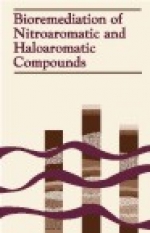Tab Article
Sites contaminated with explosive compounds, pesticides, herbicides, PCBs, and other aromatic compounds present formidable technical, regulatory, and financial challenges. The application of bioremediation technologies at such sites offers the promise of cost-effective site remediation that can serve as a key component of a well-formulated strategy for achieving site closure. This volume presents the results of bench-, pilot-, and field-scale projects focused on the use of biological approaches to remediate problem compounds, such as RDX, HMX, TNT, DDT, 2,4-D, nitro- and chlorobenzenes, nitroaniline, chloroaniline, hexachlorobenzene, PCPs, PCBs, and dichlorophenol in soils and groundwater. This book is part of the eight-volume proceedings from the 1999 International In Situ and On-Site Bioremediation Symposium held in San Diego, April 1999.


